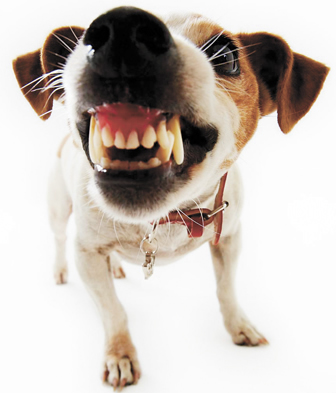Your pet deserves a professional teeth cleaning
By Brian Ashmore | July 15, 2009
 Doggy breath can really stink and so can the results of not treating and preventing oral disease in our pets. So, what options do we have to keep this insidious odor out of our pets’ mouths? There are foods specifically made to reduce tartar, specialized chews, and oral rinses and of course brushing their teeth. The most effective preventive treatment is daily brushing.
Doggy breath can really stink and so can the results of not treating and preventing oral disease in our pets. So, what options do we have to keep this insidious odor out of our pets’ mouths? There are foods specifically made to reduce tartar, specialized chews, and oral rinses and of course brushing their teeth. The most effective preventive treatment is daily brushing.
Since we do not live in a perfect world these preventive measures may fall short and this is when a professional cleaning is needed. Yes, I said professional cleaning which means it is performed at a veterinary hospital. There is a growing trend to have your pet’s teeth ‘cleaned’ without anesthesia so that there is less risk. Allow me to unveil the truth about dentistry without anesthesia … the first thing we need to do is establish the purpose of an anesthetized dental cleaning. While a pet is under anesthesia the veterinarian checks for any loose teeth, probes under all of the gums for hidden periodontal disease and takes any needed x-rays that may reveal a tooth root abscess or bone loss around a tooth root. There is certainly no way that this comprehensive examination can be performed without anesthesia.
Let’s move onto the actual cleaning of the teeth (scaling). Two areas of the teeth need to be addressed. First is the most noticeable part which is the crown or the visible part that is above the gum. Second is cleaning below the gum which is essential to treating and preventing gingivitis. This is not attainable while a pet is awake. During the scaling process there are many microscopic scratches made in the enamel. This explains why our oral hygienist polishes our teeth. If they are not smoothed out by polishing, these scratches will act as a scaffold for more plaque and tartar to accumulate. This increases the rate at which the plaque accumulates. This step is often omitted or is not able to be thoroughly performed during anesthesia-free dentistry.
The reason most pet owners seek out this sub-optimal process of dental cleaning is due to fear of anesthesia. The risks of anesthesia are minimized by a thorough physical exam, pre-anesthetic blood analysis and intravenous fluids. I always recommend you discuss any fears or concerns with your veterinarian. You will find that many of those fears are belayed by this one simple step.
My intent today is not to demean or criticize but instead, educate. Cleaning teeth without anesthesia is purely cosmetic and should not be equated to that which is performed by a veterinarian. The ability to diagnose and treat oral disease is simply not attainable without proper training, knowledge and equipment provided at a veterinary hospital. I would be happy to talk teeth if you have any questions about your pet’s dental health.
Until next time …
This article is courtesy of Animal Health Services, 37555 N. Cave Creek Rd., 480-488-6181,
www.ahsvet.com.


